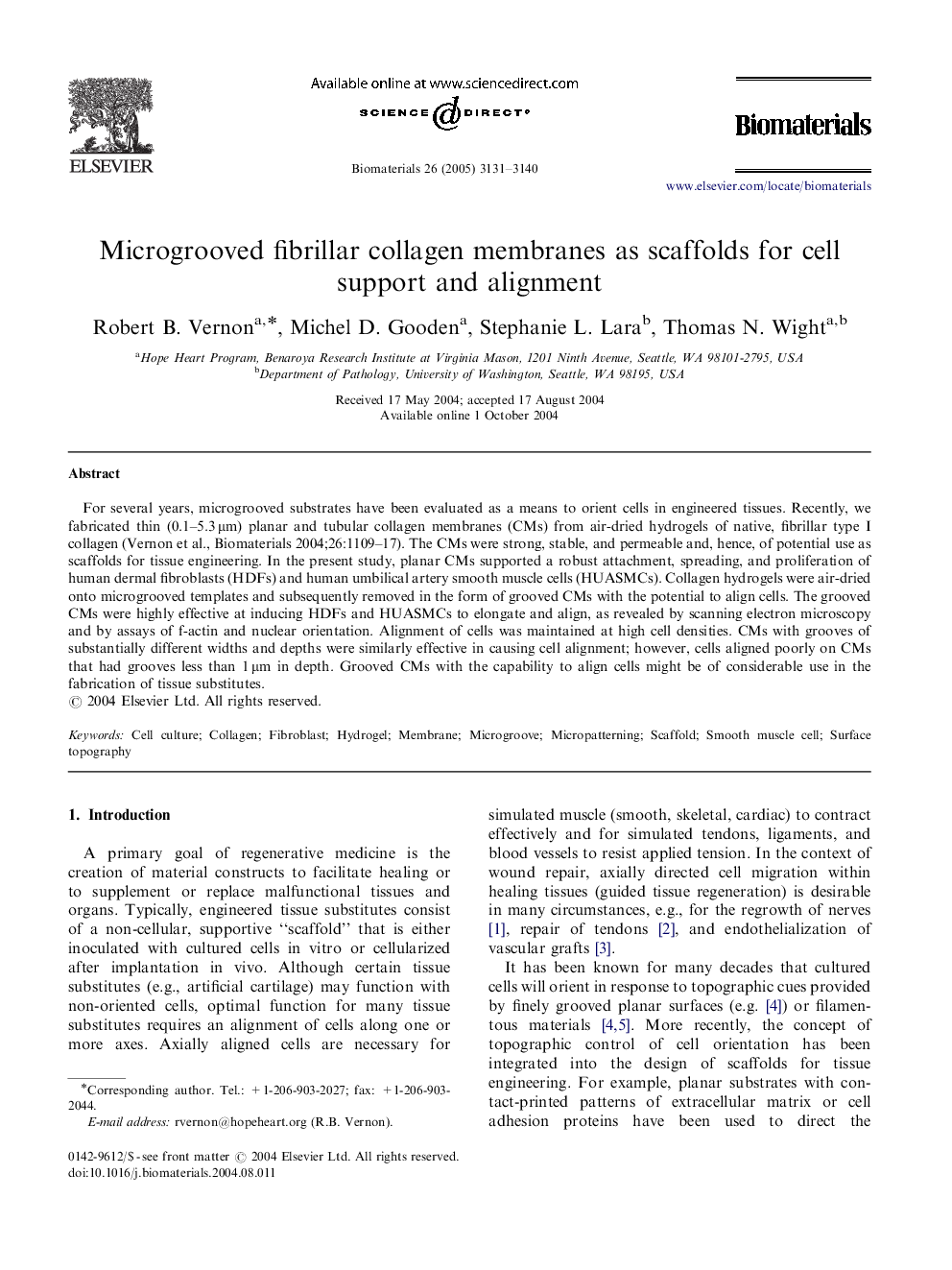| Article ID | Journal | Published Year | Pages | File Type |
|---|---|---|---|---|
| 12262 | Biomaterials | 2005 | 10 Pages |
For several years, microgrooved substrates have been evaluated as a means to orient cells in engineered tissues. Recently, we fabricated thin (0.1–5.3 μm) planar and tubular collagen membranes (CMs) from air-dried hydrogels of native, fibrillar type I collagen (Vernon et al., Biomaterials 2004;26:1109–17). The CMs were strong, stable, and permeable and, hence, of potential use as scaffolds for tissue engineering. In the present study, planar CMs supported a robust attachment, spreading, and proliferation of human dermal fibroblasts (HDFs) and human umbilical artery smooth muscle cells (HUASMCs). Collagen hydrogels were air-dried onto microgrooved templates and subsequently removed in the form of grooved CMs with the potential to align cells. The grooved CMs were highly effective at inducing HDFs and HUASMCs to elongate and align, as revealed by scanning electron microscopy and by assays of f-actin and nuclear orientation. Alignment of cells was maintained at high cell densities. CMs with grooves of substantially different widths and depths were similarly effective in causing cell alignment; however, cells aligned poorly on CMs that had grooves less than 1 μm in depth. Grooved CMs with the capability to align cells might be of considerable use in the fabrication of tissue substitutes.
